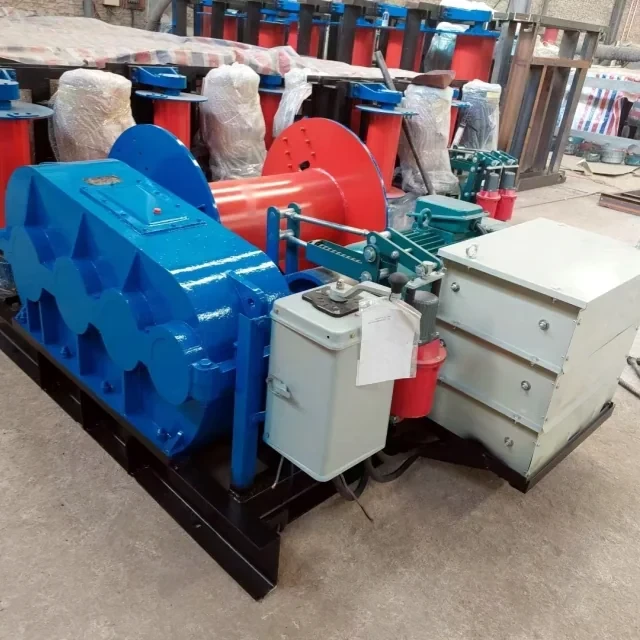Introduction
Every year, preventable hoist-related accidents cause injuries, equipment damage, and costly legal penalties. For operators and site managers, compliance isn’t just about ticking boxes—it’s about safeguarding lives. This guide breaks down the non-negotiable safety standards for hoist operation, backed by real-world risks and actionable protocols. Whether you’re locking control boxes or training new teams, these evidence-based practices ensure compliance and long-term risk reduction.
Hoist Operation Safety Standards
Why Power Disconnection and Control Locking Are Non-Negotiable
Hoists left energized or unlocked during maintenance or transport can lead to catastrophic failures. Consider these critical reasons:
- Unintended Activation: A single accidental button press can drop loads or crush limbs.
- Electrical Hazards: Live circuits risk electrocution during repairs.
- Regulatory Mandates: OSHA 1926.554 and ASME B30.16 explicitly require lockout/tagout (LOTO) procedures.
Ever wondered why "double-checking" isn’t enough? Human error accounts for 80% of industrial accidents—mechanical safeguards like locks are irreplaceable.
Step-by-Step Guide to Proper Control Box Locking
- Isolate Power: Disconnect the hoist from all energy sources (electrical, hydraulic).
- Verify Zero Energy: Use a voltmeter to confirm circuits are dead.
- Apply Locks: Use durable, tamper-proof locks (e.g., Garlway’s safety lockout kits) on control switches.
- Tag and Document: Attach a visible tag with the operator’s name and lockout time.
Pro Tip: Treat locks like seatbelts—never bypass them for "quick adjustments."
Real-World Risks of Non-Compliance
Case Studies: Accidents Linked to Neglected Protocols
- Construction Site Collapse (2022): A hoist’s unlocked control box was accidentally triggered, dropping a 2-ton beam onto scaffolding. Result: 3 injuries and $500K in OSHA fines.
- Manufacturing Plant Incident (2021): An untagged hoist during maintenance led to a worker’s hand being crushed. The company faced a wrongful death lawsuit.
Legal and Financial Repercussions for Violations
- Fines: OSHA penalties exceed $15,000 per violation for willful non-compliance.
- Liability: Courts often rule against companies failing to enforce LOTO, even if workers bypass protocols.
Did you know? Insurance premiums spike by 20–30% after safety violations—far outweighing the cost of preventive training.
Best Practices for Long-Term Safety
Routine Maintenance and Lock Inspection Checklist
- Weekly: Test lock mechanisms for wear; replace corroded or stiff locks immediately.
- Monthly: Inspect control box wiring for fraying or moisture damage.
- Post-Incident: Audit all locks after near-misses—subtle damage can compromise safety.
Training Programs for Certification and Compliance
- Hands-On Drills: Simulate emergency scenarios (e.g., sudden power surges) to reinforce muscle memory.
- Third-Party Audits: Independent evaluators (like NCCCO) identify gaps teams might overlook.
Pro Tip: Pair Garlway’s winches with their certified safety training modules to align equipment use with OSHA standards.
Conclusion: Safety as a Culture, Not a Checklist
Hoist accidents are preventable—but only if protocols become habitual. From locking control boxes to investing in operator training, every step reduces risk exponentially. Remember: Compliance isn’t bureaucratic red tape; it’s the barrier between routine work and life-altering disasters.
Actionable Next Steps:
- Download a free LOTO checklist from OSHA’s website.
- Schedule a team training session this quarter.
- Upgrade to locks with tamper-evident features (like those compatible with Garlway systems).
When safety is prioritized, productivity and morale rise in tandem. The choice is clear.
Related Products
- Portable Cement Mixer with Lift Concrete Machine
- Commercial Construction Mixer Machine for Soil Cement Mixing Concrete
- Ready Mixer Machine for Construction Ready Mix Machinery
- Warn Winch Windlass Boat Trailer Winch
Related Articles
- How to Prevent Structural Failures and Explosions in Concrete Plants: A Safety-First Guide
- How Small Cement Mixers Deliver Cost-Efficiency, Health Safety, and Versatility
- How Concrete Mixers Boost Profitability, Quality, and Sustainability in Construction
- How to Verify Fasteners and Connectors in Concrete Mixers: A Safety-First Approach
- How Small Cement Mixers’ Smart Design Saves Time and Reduces Strain




